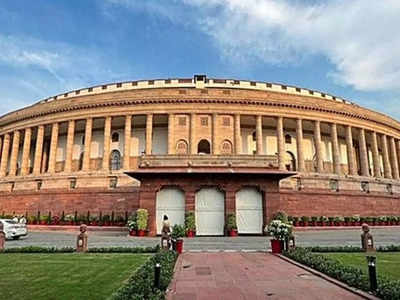Context
-
The opening day of the Monsoon Session of Parliament was disrupted after the government and the Opposition differed on the format of the discussion on the Manipur situation.
What is Rule 267, and Rule 176
- Rule 267
- According to the Rules of Procedure and Conduct of Business in the Council of States, Rule 267 relates to suspension of rules.
- It says, “Any member, may, with the consent of the Chairman, move that any rule may be suspended in its application to a motion related to the business listed before the Council of that day and if the motion is carried, the rule in question shall be suspended for the time being:
- Provided further that this rule shall not apply where specific provision already exists for suspension of a rule under a particular chapter of the Rules.”
- Short-duration discussion, on the other hand, is a brief discussion not exceeding two-and-a-half hours under Rule 176.

Courtesy: Times of India - It says that “any member desirous of raising discussion on a matter of urgent public importance may give notice in writing to the Secretary-General specifying clearly and precisely the matter to be raised:
- Provided that the notice shall be accompanied by an explanatory note stating reasons for raising discussion on the matter in question:
- Provided further that the notice shall be supported by the signatures of at least two other members.”
- Once the Chairman admits the notice, the rules say he, in consultation with the Leader of the Council, will fix the date on which such matter may be taken up for discussion and allow such time for discussion, not exceeding two and a half hours.
- It means that a short-duration discussion under Rule 176 can be taken up immediately, a few hours later, the next day or can be fixed for a later date and time. But the rule says there shall be no formal motion or voting under a short duration discussion.
- “The member who has given notice may make a short statement and the Minister shall reply shortly,” the rule says.
- It says that “any member desirous of raising discussion on a matter of urgent public importance may give notice in writing to the Secretary-General specifying clearly and precisely the matter to be raised:
What experts say
- Experts say opposition parties had been mistakenly using Rule 267 as an equivalent to the adjournment motion in Lok Sabha.
- In case of adjournment motion, governed by Rules 56-63 of the Rules of Procedure and Conduct of Business in Lok Sabha, the discussion is based on a motion.
- The rule defines adjournment motion as “a motion for an adjournment of the business of the House for the purpose of discussing a definite matter of urgent public importance may be made with the consent of the Speaker”.
- And the rules say “not more than one such motion shall be made at the same sitting.
- Adjournment motion is to take up for discussion a subject of urgent nature…not just discussion; the adjournment motion has an element of censure.
- That is the privilege of Lok Sabha because LS can bring down a government which the RS cannot do..that is why there is no adjournment motion in Rajya Sabha.
- There is no rule in Rajya Sabha which has an element of censure…so the Opposition has always been using Rule 267.
Source: IE
Visit Abhiyan PEDIA (One of the Most Followed / Recommended) for UPSC Revisions: Click Here
IAS Abhiyan is now on Telegram: Click on the Below link to Join our Channels to stay Updated
IAS Abhiyan Official: Click Here to Join
For UPSC Mains Value Edition (Facts, Quotes, Best Practices, Case Studies): Click Here to Join
